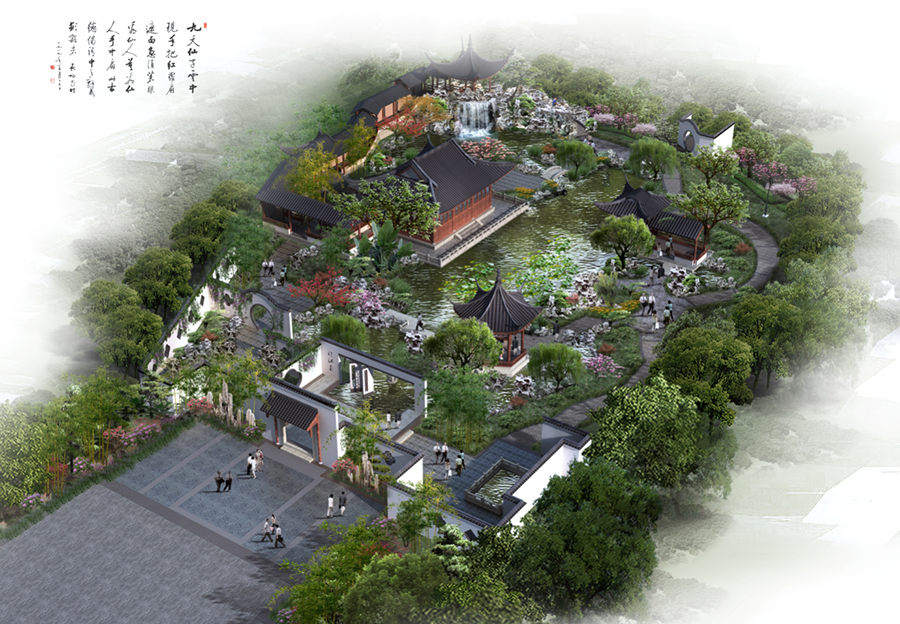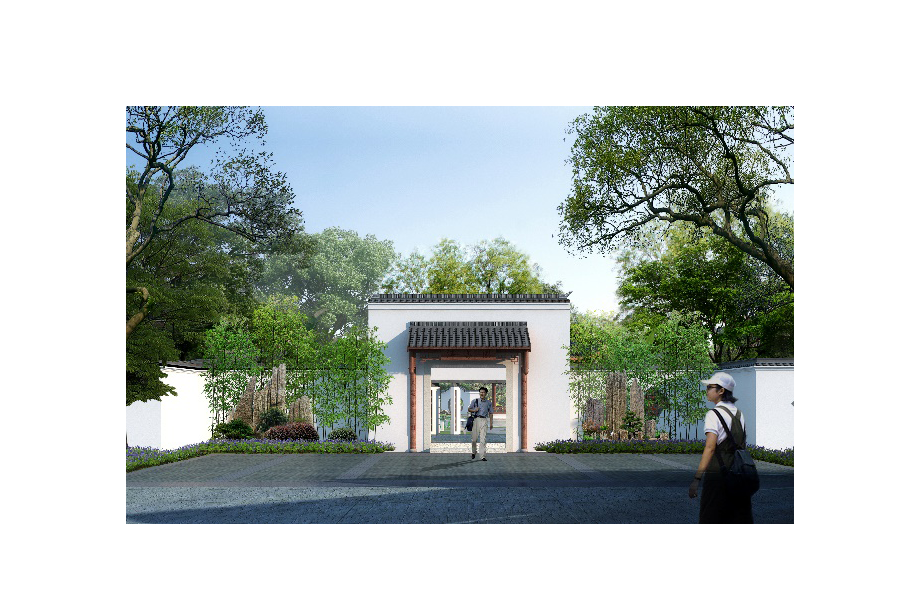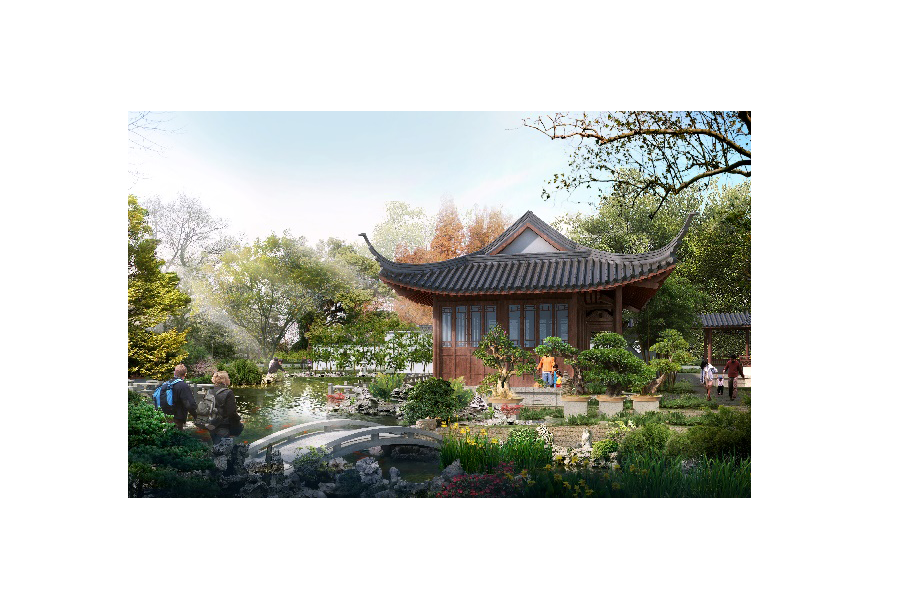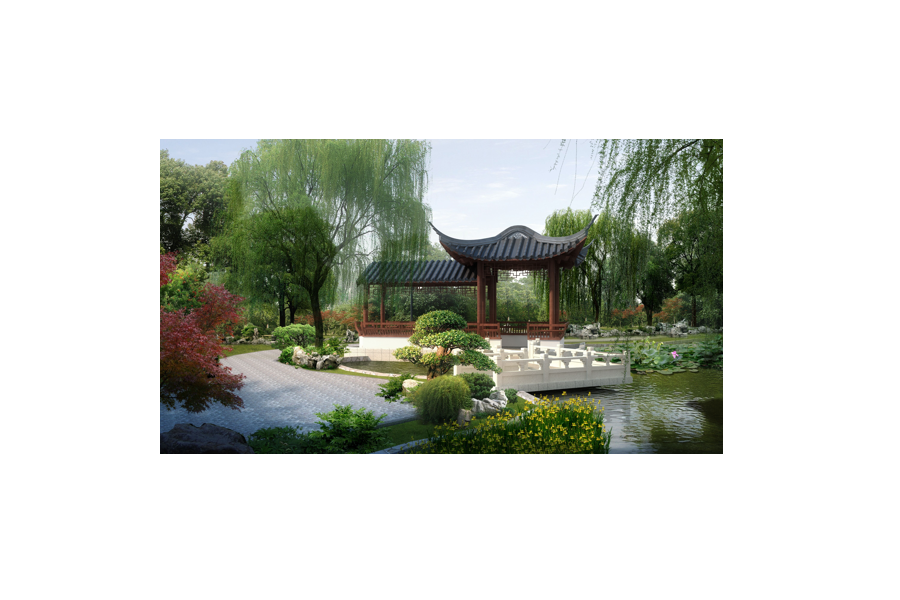Ting,tang,xie, andfangare all landmark building forms of the Suzhou-style gardens, which are characteristic of Suzhou’s architecture. At the Beijing Expo 2019, the Jiangsu Garden will use these Suzhou-style elements to create an impression of a “poetic and picturesque province.” The scene changes with each step at the Garden.

The entire Jiangsu Garden is divided into four landscape areas: Spring Garden, Lotus Winds, Jade Hall of Prosperity, and Fragrance and Views. Spring Garden, an imitation of the entrance of the Ge Garden in Yangzhou, shows the exquisite classical garden landscape in the spring, dominated by stalagmites and morning bamboos (Phyllostachys propinqua). The entrance is connected to the festoon gate, with a horizontal inscribed board saying “Jiangsu Garden” and two pillars bearing a poetic couplet “Painting gardens by the Taihu Lake; and painting forests near Zhong Mountain.” Whitewashed walls and black tiles feature Suzhou-style gardens, with stalagmites arranged on both sides, looking like the spring bamboo shoots breaking out of the soil after the rain, bringing a breath of spring.

Lotus Winds mainly shows the lakeside stone and Pine and Crane Pavilion. Around the Wisteria Tea House are green bamboos and banana trees. When it rains in the summer, you can stop there listening to the raindrops rattling on the leaves of banana trees. Following a pebbled road southward, you cross a bridge to reach a small island in the water, having in view the quaint Pine and Crane Pavilion, surrounded by crape myrtles and hibiscus flowers. All these make the sculpted pines more elegant. The pines and crane are traditionally a reference to longevity in Chinese culture.

From the Jade Hall of Prosperity you can see Elm’s Shade Pavilion, Zhegui Corridor, Rockery, and the Full Moon Pavilion. Elm’s Shade Pavilion is the main building of the Jiangsu Garden, with a horizontal inscribed board saying “Elm’s Shade Pavilion”, and two pillars bearing a poetic couplet “Lotus flowers on four sides are with willows; Buildings are found near a lake.” On view at Elm’s Shade Pavilion are brocades, double-sided embroidery, tea art and floral art. Rockery, waterfalls, and cascades are formed into a whole. At the top of the rockery is a four-cornered pavilion named Full Moon Pavilion, which has a view of the whole Jiangsu Garden and echoes with the Moon Pool.

Fragrance and Views consists of Fragrance Dock, miniature terrains, potted plants, and other small garden items, which are wonderfully arranged to form a contrast with the rockery and the Elm’s Shade Pavilion. Fragrance Dock is small in size, and is on the surface of the water. Surrounded by water ripples and illuminated by classical lanterns of Suzhou, you can enjoy the dreamy beauty of a water village.

The entire Jiangsu Garden draws on Jiangsu’s culture and Jiangnan garden art, uses ancient and modern gardening principles and information technology (IT)-driven display technologies, and combines new technology, new materials, new techniques, and green ecology. Showing Jiangnan-style garden, the Garden is designed as an intelligent, cultural, and technological garden to reflect Jiangsu’s natural environment, traditional arts, culture, and the people.